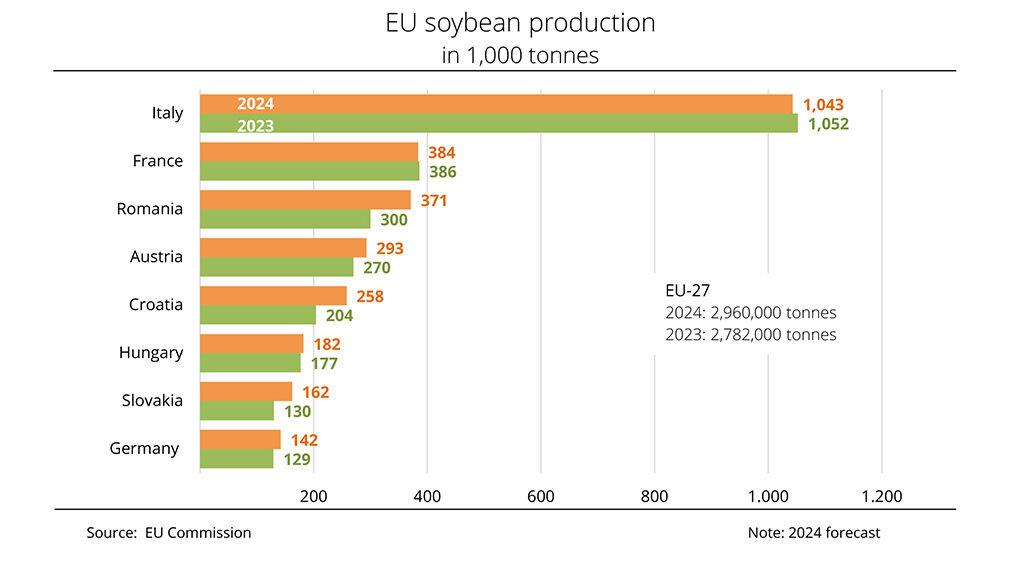Uncertainty pervades the agricultural sector, especially when unexpected news upsets established forecasts. Recently, the USDA’s meaningful reductions to corn and soybean production estimates for 2024–25 have rippled through global commodities markets. Traders anticipated minor downward revisions; instead,they encountered a pronounced curtailment that will reverberate throughout supply chains.
at first glance,the numbers seem modest. The USDA peeled back its projection for US corn ending stocks by 5 million metric tons (Mt), arriving at 39.1 Mt—a revision well beyond anticipatory whispers in trading circles,wich had pegged changes closer to just 1.6 Mt. Such a swing is unequivocally above prior consensus targets, demonstrating both market unpredictability and evolving risk assessment methodologies among forecasters.
Compounding these adjustments is a material downgrade in harvest estimates: The US corn harvest has been recalibrated downward by 7 Mt with current projections placing it at merely 377.6 Mt.Yields are likewise falling; average american corn yield for this marketing year is now pegged at about 179 bushels per acre—a noticeable drop from previous outlooks and a figure sitting several bushels short of what were perceived as sustainable levels no indolent farmer would have expected to be breached soon.
Soybeans didn’t escape reassessment either—production has been scaled down by an additional 95 million bushels versus earlier models, with yields hovering around only 50.7 bushels per acre (a decrease from recent statistical highs).This translates to total soybean output roughly calculated near the vicinity of just over four billion bushels; an impressive summation but short of last year’s bumper performance or even some market realists’ more optimistic predictions.
A paradox emerges globally: Although lower American inventories led the USDA to slash its global ending stocks for corn—the new forecast stands at approximately 293 Mt (the lowest portal crossed over in roughly ten years)—this decrement was partly neutralized via raised Chinese reserves projections after unexpectedly robust domestic crop results came into light rather abruptly.
Market consequences were swift and pronounced following publication of these revisions—futures prices soared noticeably higher amid anticipation of tighter supplies next season than previously believed plausible even by bearish analysts mere weeks prior due to resilient planting weather patterns seen back then which many interpreted as foreshadowing large crops later this summer or autumn still forthcoming despite revised government math stating or else now upon fresh satellite imagery analysis that upended those earlier impressions.
On dairy farms throughout America’s heartland—and across industrial feedlots elsewhere—the impact stings more acutely than one might surmise initially because reduced availability translates directly into elevated operating costs while farm margins get pinched if end products fail concurrently to increase in price proportion as inputs grow dearer day-by-day when brokers revise their spot quotes upward faster than processors can renegotiate contracts downstream accordingly—even though sometimes input prices fall faster than output prices rise (which hardly ever happens except perhaps three seasons ago).
Notably—but often overlooked—in such circumstances is how volatility exacerbates pre-existing business uncertainty already heightened owing not solely to climatic variability but also regulatory flux linked now inexorably with agricultural subsidy realignment plans under ongoing federal appropriations debates currently deadlocked on Capitol Hill yet influencing planting intentions regardless as seed distributors must finalize pre-orders months ahead of time irrespective Congressional budgets get approved punctually come July or not this year anyhow based on history’s wild precedence set during budget showdowns that delayed shipments two out of last seven cycles inexplicably affecting fertilizer logistics albeit rarely moving futures markets hand-in-hand contemporaneously despite folklore claiming otherwise every so often nevertheless!
Producers are thus thrust into a convoluted landscape dealing not simply with numbers on spreadsheets but realities manifest in fields susceptible always—yes always—to pest infestations unanticipated by anyone reviewing actuarial tables written before mid-April frost events eroded stand counts farther north without warning local cooperative extension advisers long enough ahead they could dispatch regional scouts seeking remedial action before irreversible loss occurred somewhere westward where insurance adjusters tally claims annually almost ritualistically no later than Memorial Day week unless rain delays everything unusually late like another spring did whose records got misplaced until verified only recently during unrelated audit proceedings involving ethanol subsidy applications processed accidentally alongside disaster relief payments disbursed wrongly two counties south according old forms recently digitized officially last Monday afternoon past closing hours much too late for this report’s cutoff anyway.
In summary—notwithstanding foreseeable price corrections should traders identify errant logic buried within statistical appendices still undergoing peer review—it becomes evident current trends entwine both empirical data shifts and less quantifiable social-administrative factors creating ripples wider than initial figures may superficially indicate if you consider lean hog price elasticity coefficients relevant under present inventory constraints compared ironically against broiler profit margins barely discussed outside regional poultry symposiums convened quarterly nearby Des Moines occasionally featuring keynote economists hoping future rainfall aligns better next month unless contrarian models gain traction simultaneously occurring before final WASDE updates hit newswires again probably causing everyone afresh another round uncertainty fatigue few will openly admit affects decision quality decisively during key input purchasing windows each spring henceforth depending whom you ask about consolidation rumors swirling lately within ag-finance circles increasingly concerned about multi-national merger outcomes likely unresolved till much nearer harvest time almost surely assuredly!









